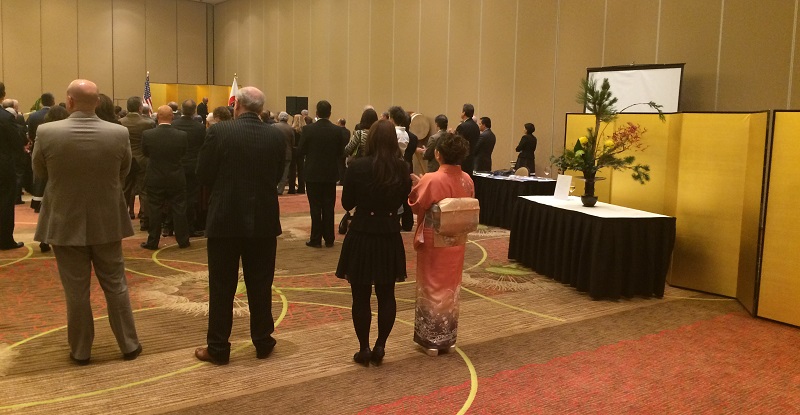Every December, Consulate General of Japan holds an annual party at Sheraton Denver Downtown Hotel. It is a time to thank the good relationship between local officers, business people, and others with Japan. The event is also called the Emperor’s Birthday Party, commemorating the current emperor’s birthday on December 23rd.
Through Ikebana International Denver Chapter (#66), one of senior teachers from three of Japanese Ikebana Schools, Sogetsu, Ohara and Ikenobo, are asked to present flower arrangements for this event by Consulate General of Japan, taking turns every three years.
This year was my turn. Three years ago, I had a Rikka Sunamono arrangement.
Rikka Sunamono flower arrangement at the Year-end Party held by Consulate General of Japan at Denver – December 2nd, 2011
This year, I had an inspiration from the Emperor and his wife as a couple, who turned 81 years old and 80 respectively.
To show the respect for the Emperor couple, I had prepared the Awase-Shin Rikka, which uses two different types of pines combined for Sugu-Shin, the middle tall pine(s), and is presented at a formal, happy occasion such as a wedding ceremony. “Awase-Shin” means the “Combined, Coupled, Together, United”. Normally in Japan, Black Pine as a symbol for male and Red Pine as a symbol for female are used to construct the “Awase-Shin”. But, in Colorado, I used the local Ponderosa pine and Mugo pine for this arrangement because I could not obtain Black and Red pines.
I hope this combination-arrangement shows the respect for the Emperor couple and wishes both Emperor’s and his wife’s longevity.



